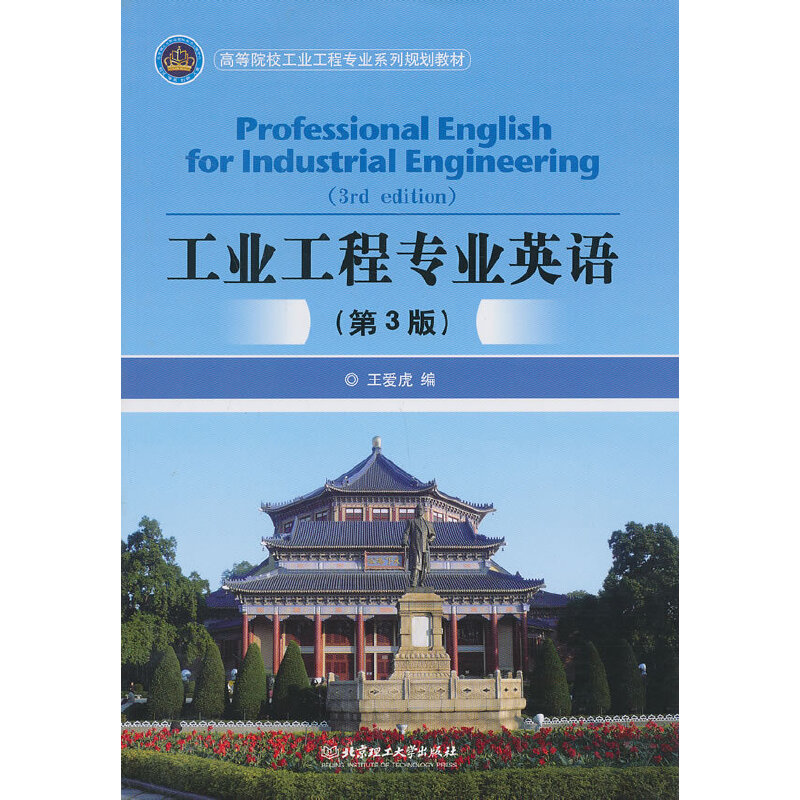测控技术与仪器专业英语教程(第3版) / 高等学校专业英语教材
作者: 刘曙光
出版时间:2013年8月
出版社:电子工业出版社
- 电子工业出版社
- 9787121210334
- 1-1
- 135216
- 0047151564-3
- 平装
- 16开
- 2013年8月
- 595
- 288
- TM93
- 电气自动化
- 研究生、本科
《测控技术与仪器专业英语教程(第3版)》可以作为测控技术与仪器专业的专业英语课程教材,也可供从事相关专业的工程技术人员学习参考。
Lesson 1 Periodic Signals
1.1 TimeDomain Description
1.2 FrequencyDomain Description
1.3 Orthogonal Functions
1.4 The Fourier Series
Exercises
Reading Material:Underwater Acoustic Signal
Lesson 2 Aperiodic Signals
2.1 Introduction
2.2 The Exponential Form of the Fourier Series
2.3 The Fourier Transform
2.4 The Laplace Transform
Exercises
Reading Material:Properties of Signal and Noise
Lesson 3 SampledData Signals
3.1 Introduction
3.2 Mathematical Description Using the Dirac Function
3.3 Spectra of Sampleddata Signals
3.4 The ztransform
Exercises
Reading Material:Signal Sampling
Lesson 4 Random Signals
4.1 Introduction
4.2 Elements of Probability Theory
4.3 Amplitude Distribution and Moments
4.4 The Autocorrelation and Power Spectral Density
Exercises
Reading Material:The Processing of Random Signal
Lesson 5 Static Performance
5.1 The Ideal Measuring System
5.2 Sensitivity
5.3 Accuracy and Precision
5.4 Possible and Probable Errors
5.5 Other StaticPerformance Terms
Exercises
Reading Material:Noncontact Temperature Measurement
Lesson 6 Dynamic Performance
6.1 Zeroorder Systems
6.2 Firstorder Systems
6.3 Secondorder Systems
6.4 Stepresponse Specification
6.5 Frequencyresponse Specification
Exercises
Reading Material:Eddy Current
Lesson 7 Basic Knowledge of Transducers and Resistance Transducers
7.1 Transducer Elements
7.2 Transducer Sensitivity
7.3 Characteristics of an Ideal Transducer
7.4 Electrical Transducers
7.5 Resistance Transducers
Exercises
Reading Material:Laser
Lesson 8 Capacitance, Inductance Transducers and Some Others
8.1 Capacitive Transducers
8.2 Inductive Transducers
8.3 Linear Variabledifferential Transformer(l.v.d.t.)
8.4 Piezoelectric Transducers
8.5 Electromagnetic Transducers
8.6 Thermoelectric Transducers
8.7 Photoelectric Cells (selfgenerating)
8.8 Mechanical Transducers and Sensing Elements
Exercises
Reading Material:Video Camera
Lesson 9 Analog Instruments
9.1 Meter Basics
9.2 Ammeters
9.3 Current Measuring Errors
9.4 DC Voltmeters
9.5 Voltage Measuring Errors
9.6 Ohmmeter and Resistance Measurements
9.7 Series Ohmmeter
9.8 Shunt Ohmmeter
9.9 Ohmmeter Accuracy
9.10 VoltOhmMilliammeters
9.11 Electronic Voltmeters
9.12 Transistorized Electronic Voltmeters
9.13 FET Voltmeters
9.14 Operational Amplifier Electronic Voltmeters
9.15 Electronic Current Measurements
9.16 Resistance Measurements
Exercises
Reading Material:Rectifier Meters
Lesson 10 Digital Instruments
10.1 Digital Displays
10.2 Electronic Digital Counter
10.3 Input Signal Conditioning
10.4 Timerbase Oscillator
10.5 Timerbase Dividers
10.6 Counting Register
10.7 Digital Voltmeter
Exercises
Reading Material:Risetime Measurements
Lesson 11 Computerbased Test Instruments
11.1 Internal Adapters
11.2 External PC Instruments
11.3 AnalogtoDigital Conversion
11.4 Computer Interface
11.5 Generalpurpose Interface BUS
Exercises
Reading Material:PCbased Workstation
Lesson 12 Industrial Bus
12.1 What is An Industrial Bus
12.2 Data Line Isolation Theory
Exercises
Reading Material: Serial Communications Systems
Lesson 13 Programmable Logic Controller
13.1 Basic PLC Operation
13.2 HardWired Control
13.3 Advantages of PLCs
13.4 Siemens PLCs
13.5 CPU
13.6 Programming Devices
13.7 Software
13.8 Connector Cables PPI (PointtoPoint Interface)
Exercises
Reading Material: Terminology
Lesson 14 Remote Sensing
14.1 Sensors
14.2 Satellites
14.3 Outlook
Exercises
Reading Material:GPS
Lesson 15 Multisensor Data Fusion
15.1 Introduction
15.2 Technical Background
15.3 Method
15.4 Application
Exercise










